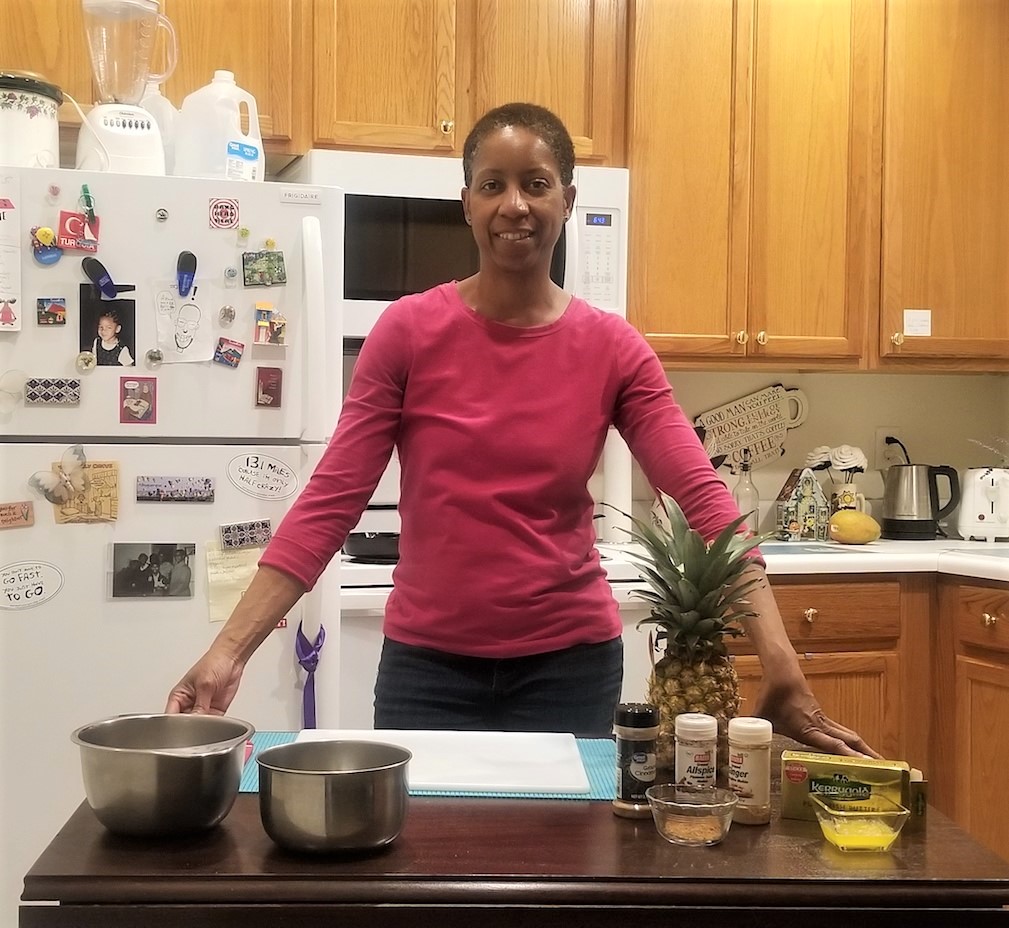
May 04, 2020
Creating in the kitchen: SIU students use pandemic to create online cooking videos
CARBONDALE, Ill. — Once their food production classroom was interrupted by the COVID-19 pandemic this spring, Southern Illinois University Carbondale students shifted gears to answer questions about cooking for yourself or family while sheltering at home.
The result? The students provided a unique series of videos to help people who were trying to figure out what dishes they could cook using items already found in their kitchen cabinets.
Cupboard Café is born
Typically, students in SIU’s quantity food production course taught by Sylvia Smith, associate professor of hospitality, tourism and event management, get practical experience cooking large quantities of food by working in campus dining halls. They use large commercial food preparation equipment and work alongside experienced food service personnel.
But when classes switched to online and other alternative formats, necessity became the mother of invention. Smith asked her class of about 20 students to ponder what they could creatively cook at home, if possible, “with the bare essentials in your cupboard.”
Each student was tasked with creating three cooking videos featuring recipes that could easily be recreated without making a trip to the store.
Smith asked students to apply what they had already learned in her class: be creative and present healthy, appealing dishes. Each video is a maximum of three minutes long and incorporates food safety, cooking methods, equipment, ingredients used and preparation directions.
Wide variety
The finished videos posted on YouTube show an eclectic mix of dishes, including entrees, appetizers, snacks, desserts and drinks.
Adriana Jones showed how to make toast two different ways when you don’t have a toaster on hand, either by broiling or pan frying, and how to prepare oatmeal. Jose Leal created an appetizing scrambled egg casserole. There are other breakfast foods, too, including Adam Salmo’s French toast and Brittany Staniszewski’s avocado, bacon, egg and cheese breakfast sandwich with hash browns. Jacob Dust blended a chocolate peanut butter protein shake that he says would “make Arnold proud,” while Makayla Musgrove made a refreshing strawberry banana smoothie with chia seeds.
There are a wide variety of main dish options as well, including Brittany Bowkley’s garlic shrimp pasta, Melik Shaw’s 4-minute chicken quesadillas, Musgrove’s cauliflower gnocchi and Madeline Wiemers’ gourmet chicken ramen.
Some of the students focused on healthy foods while others had comfort food in mind. Check out Cassidy Ruble’s healthy tuna pasta salad, Lauren Frisch’s rice, corn and bean blend, Cristina Bell’s garbanzo and spinach recipe and Zakk Welsh’s one-pot homemade mac and cheese.
Creativity really came into play for some students who tried to find new ways to use things they had. Levi Anglin made sourdough starter pizza and Raven Lovett concocted pot roast fried rice when she melded some leftovers together. And of course, you’ve got to have dessert, so Jeremy Strebel offered brownies.
Looking for versatility
Kelly Overhaug, a junior human nutrition and dietetics major from Taylorville, was looking forward to working in a dining hall. She was a bit worried when she got the new assignment since she had very little video experience.
However, she had access to the SIU kitchens and recording equipment, and with just the food she had on hand, she managed to present some appealing dishes, including peanut butter and jelly oatmeal, homemade granola and made-from-scratch tortillas.
“I chose pbj oatmeal and granola because of their versatility,” she said. “These two recipes have ingredients that can be easily substituted with pretty much any ingredients from your pantry.”
She decided to make tortillas because they are used in tacos and many other dishes and yet many people have never made them from scratch.
“I thought that maybe if someone had all of the ingredients to make tacos or another dish that used tortillas, but didn’t have tortillas, they could use this recipe and avoid an unnecessary trip to the grocery store,” Overhaug said. She also noted that in some locales yeast is difficult to obtain so tortillas are “a good carb option to make instead of bread.”
Experienced in changing courses
This isn’t the first time Kim LaShawn Reese has experienced a big change. A native of Brooklyn, New York, she retired last year after serving her country for nearly three decades. With a bachelor’s degree in hospitality management, Reese is pursuing a second degree in human nutrition and dietetics. Her long-term goal is to direct a farm-to cafeteria program for a daycare center or elementary school.
“I dream of creating gardens, teaching kitchens and education programs that help our youth understand the importance of nutrition as well as how much fun growing and cooking your own food can be,” she said.
Reese is in her first year at SIU preparing for her new career and had been volunteering in the SIU Child Development Lab kitchen prior to the stay-at-home directives. She assisted with menu planning, food shopping, planning and serving meals, cleaning and sanitation along with giving short nutritional lessons to pre-K children.
“I spent the last 28 years serving my nation in the Air Force, and now SIU is equipping me with the skills necessary to continue serving my community by teaching them to prepare healthful meals for themselves and their families,” she said.
Although initially disappointed to be unable to continue working in the kitchen, she was pleased at how quickly the curriculum was adjusted and has found that creating the cooking videos has helped her hone her kitchen, teaching and video editing skills immensely.
Reese’s flatbread pizza video, complete with music, looks quite professional. She especially enjoyed creating a CocoaRoons video because she learned to incorporate captions, which added versatility to her presentation.
Remarkable work
Smith said she’s impressed overall with the video projects her students submitted.
“The students did a good job and it pushed them creatively,” Smith said.
What makes it even more impressive, she notes, is that “some of the students were really working with the bare essentials.”
